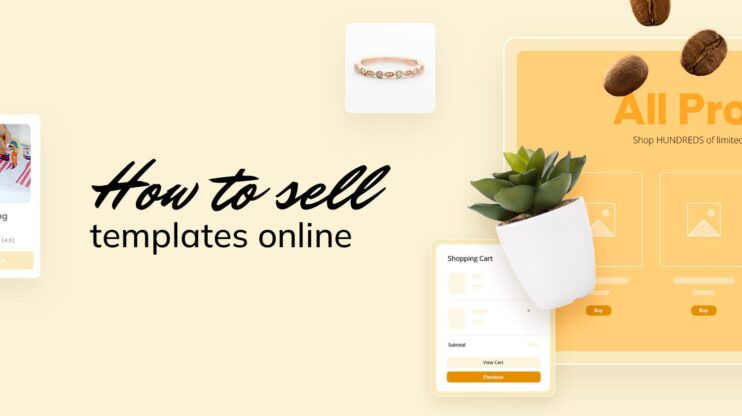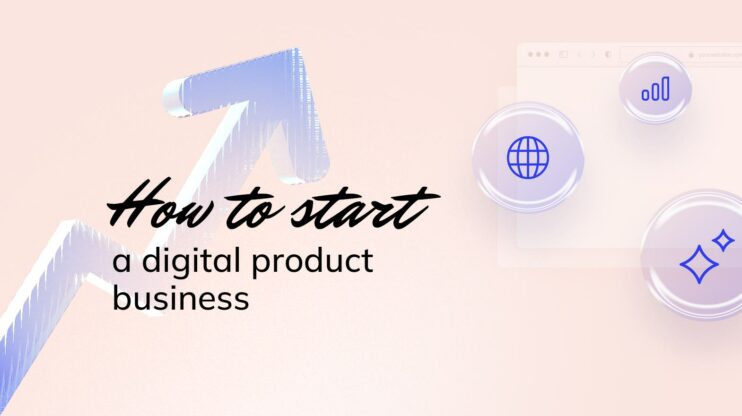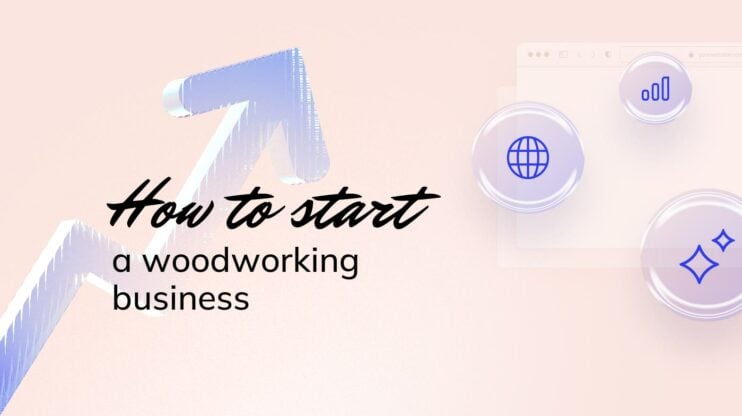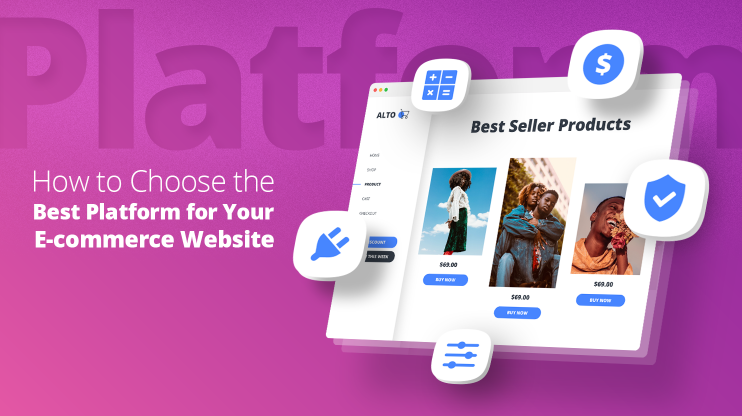The online clothing resale market is booming and redefining how we shop, sell, and even think about fashion. Some reasons behind this are conscious shopping, sustainability, and fast fashion. From individuals clearing out their closets to resellers and small fashion brands, more people are turning their wardrobes into cash with minimal startup costs. Well, who doesn’t love the idea of making money from clothes that are just sitting there, collecting dust?
So, where do you start? Selling clothes online doesn’t mean snapping a few photos and hoping for the best. To be successful, you should know what to sell, where to sell, and how to present your items for maximum visibility. Let’s discuss the latest trends shaping the online fashion resale market, compare the best-selling platforms, and explore how to create your store for more control and long-term growth.
The online clothes-selling market and trends
The frequency of shopping is also rising. According to Emarketer, 36.4% of shoppers buy apparel online three to five times a year․ The convenience and accessibility provided by online shopping platforms are prompting a shift away from traditional brick-and-mortar stores, giving you a chance at successfully selling clothes online.
Who’s buying clothes online?
Even though online clothing sales are growing, some people still prefer buying offline. So, when it comes to selling clothes online, you should first understand your target market. Online retail attracts several groups:
- Budget shoppers: People who want good-quality clothes at low prices.
- Fashion enthusiasts: Trendsetters looking for stylish, unique, or limited-edition pieces.
- Sustainable consumers: Buyers who choose second-hand fashion to help the planet and reduce waste.
- Collectors: Shoppers searching for rare vintage items, designer brands, or trendy streetwear.
What sells? Popular clothing categories
Fashion trends change every season which starts with high-end designers setting the color, patterns, and fabric trends that trickle down to all parts of the clothing industry. Yet there are some trends that are always sought after no matter what’s in season. Being in tune with the demands, needs, and clothing styles of your target market is going to give you an extra push towards selling your clothing online. Here are the best-selling categories in today’s resale market.
- Designer pieces: Luxury brands (Chanel, Gucci, Prada) hold their value and attract high-end buyers.
- Vintage apparel: From ‘90s Levi’s to Y2K mini skirts, nostalgia-driven fashion is in demand.
- Streetwear: Hype brands like Supreme, Off-White, and Fear of God have a loyal following.
- Fast fashion brands: Popular labels like Zara, H&M, and ASOS move quickly at the right price.
- Kids’ clothing: Parents love scoring deals on quality second-hand children’s wear.
- Seasonal trends: Think winter coats in December, and festival outfits in summer—timing matters!
Financial & legal considerations
Before you jump into selling, let’s talk about something not-so-fashionable but super important—legal and financial stuff. It might not be the most exciting part of running an online clothing business, but covering your bases now will save you from major headaches later.
First, know your tax obligations. In the U.S., if you make more than $600 in sales, platforms like PayPal, eBay, and Poshmark may send you a 1099-K form to report your earnings to the IRS. If you’re treating this as more than just a side hustle, you might also need to register as a business, depending on your state’s regulations. It’s worth checking out so you don’t get hit with unexpected tax surprises.
Next, watch out for scammers. If a buyer asks you to complete a transaction outside the platform, sends a fake payment confirmation, or tries to get a refund under shady circumstances—red flag! Stick to trusted payment methods, and never ship an item until the payment is fully processed.
Lastly, play by the rules. Stay compliant with consumer protection laws by being honest in your product descriptions, setting a clear return policy, and following marketplace guidelines. A little transparency goes a long way—not only will it keep you out of legal trouble, but it’ll also help build trust with buyers (which means more sales in the long run!).
Selling online is exciting, but being smart about the financial and legal side ensures you can keep growing—without any unwanted surprises.

Create your online store in minutes!
Looking to sell online? Develop and launch your store with 10Web AI Ecommerce Website Builder.
Choosing a platform to sell clothes online
There are a couple of ways you can sell clothes online. Unless you’re building your website—where you have full control over branding and pricing—existing marketplaces come with specific audiences and advantages. These marketplaces are like shopping malls, you get a platform to list your items and customers make purchases, buying different brands in one place.
Some of these marketplaces are for luxury shoppers, while others attract bargain hunters or trendy streetwear fans. Let’s look at the most popular ones, of which you can pick the best fit for your products and audience.
1. Grailed
Grailed is a premier online marketplace for fashion enthusiasts seeking high-quality, pre-owned menswear and womenswear. The platform boasts a vast selection of items from over 10,000 designers, including coveted brands like Supreme, Off-White, Gucci, and Balenciaga. With a global community exceeding 10 million users, Grailed offers a unique space for both buyers and sellers to engage in the resale of authentic luxury, streetwear, vintage, and archival pieces. The platform emphasizes authenticity, with expert moderators ensuring that all listings are genuine, providing a trustworthy environment for fashion aficionados.
2․ Poshmark
Poshmark stands out for its social shopping vibe, where buyers and sellers connect through “Posh Parties” (real-time virtual shopping events where users can meet up in the Poshmark app to shop, share, and sell clothing, accessories, and select home goods) and in-app sharing. The more you engage, the more visibility your listings get, helping you reach a wider audience.
Listing an item is easy—just snap some photos, write a description, and once it sells, Poshmark provides a prepaid shipping label. While the platform’s fees are a bit higher than some competitors, the community-driven atmosphere and simple selling process often make it worth it.
3. Mercari
Mercari makes buying and selling easy with a simple, no-fuss approach. Just upload photos, add details, and choose whether you or the buyer covers shipping. Since Mercari sells more than just clothes, you’ll have a wide pool of shoppers. Plus, with competitive fees and no social-selling features like Poshmark, it’s a great option for quick, hassle-free sales.
4. ThredUp
ThredUp is perfect if you want a hands-off selling experience. Just request a Clean Out Kit or shipping label, send in your clothes, and ThredUp takes care of everything—sorting, listing, and shipping. It’s super convenient, but payouts are lower than on self-managed platforms. If you’re short on time and just want to clear out your closet with minimal effort, ThredUp is a great option.
5. The RealReal
If you’re selling designer brands, The RealReal is a great choice. They handle authentication, pricing, and listing, so you don’t have to do the work. Buyers trust the platform, which means you can sell high-end pieces faster.
The downside is the commission they take, so you’ll earn less than selling directly. But if you want a hassle-free way to sell luxury fashion, The RealReal is worth it.
6. eBay
eBay gives you full control over your sales, whether you’re listing designer pieces or everyday fashion. You can set a fixed price or use auctions to let buyers bid.
With millions of shoppers worldwide, your listings get huge exposure. Just make sure to use great photos and clear descriptions to stand out. If you want flexibility and a large audience, eBay is a solid option.
7. Facebook Marketplace and Instagram Shopping
The two most well-known places for sales, Facebook and Instagram, are great for direct-to-buyer sales without marketplace fees. These platforms work well for local transactions, one-of-a-kind pieces, and small brands looking to build a loyal following.
Sell clothes online with 10Web
What’s more satisfying than selling clothes from your own store? Knowing you can build that store in just minutes. Yes, it’s real! 10Web’s AI Ecommerce Website Builder helps you build and launch your online shop with ease; no coding, no design headaches, just a simple, AI-powered experience that gets your store up and running.
Why have your own online store
Selling on third-party marketplaces is convenient, but it also comes with high fees, competition with other sellers on the platform, and limited control. With your own website, you set the rules. You control your branding, pricing, and customer relationships—without worrying about marketplace restrictions. Plus, your store is a long-term investment. Instead of relying on platforms that can change policies overnight, you’re building a digital space that’s yours.
An independent store also means higher profits. You won’t have to pay marketplace commissions on every sale. Website Builders, like 10Web AI Ecommerce Builder, give you an SEO-optimized website along with hosting. And thanks to these built-in SEO tools, shoppers can find you through Google, so you won’t have to rely as much on paid ads to drive traffic.
How 10Web’s AI Ecommerce Website Builder makes it easy
10Web’s AI-powered Ecommerce Website Builder creates a functional WordPress website for you after answering a few business-related questions, allowing you to customize it as needed.
Here’s why it’s a game-changer:
- AI-powered setup: Get a customized website in minutes with no coding required.
- WooCommerce integration: 10Web’s AI Ecommerce Website Builder easily integrates WooCommerce, automatically installing and utilizing its full functionality during your site’s creation. This allows you to manage products, payments, and orders directly from your 10Web dashboard.
- Fast, optimized performance: Automated tools ensure your site loads quickly and runs effortlessly.
- Built-in SEO & security: Attract customers through search engines while keeping your store secure.
Let’s build your clothing shop:
- Go to 10Web.io > provide your store name > describe it in a few words > click Generate Your Website.
- Review the Website name and description.
- Click Next > review the website structure that AI’s created.
- Click Next > choose the website colors, fonts, and styles.
- Click Generate to apply.
After 10Web’s AI Ecommerce Website Builder has built your store, you are directed to a user-friendly interface where you can manage your products. At this stage, you can also customize your store, change the design, and adapt the content. This is your chance to skip technical headaches and start selling clothes online, go ahead and try 10Web!
Get customers to your store through marketing
What’s the point of having great products if no one is paying attention? Smart marketing plays a key role in attracting, engaging, and converting shoppers into buyers. Unlike third-party marketplaces where shoppers are already searching for clothes, your independent store needs traffic. The traffic usually comes from Search Engine Optimization (SEO), which helps your store appear in Google searches, bringing in shoppers actively looking for what you sell. Along with SEO, you should invest in social media, where your potential customers hang out and guide them to your website.
Open a business account on the most famous social media platforms (also consider which ones your buyers will use) and start posting and promoting your store. Instagram, TikTok, and Pinterest are powerful tools for showcasing your brand, engaging with potential buyers, and creating buzz around your clothing line. Paid advertising on Facebook, Instagram, and Google Shopping can help you reach the right audience faster.
Doing smart marketing means constantly showing up and creating a recognizable name for your brand.
Product presentation and customer service
Presentation is decisive in selling clothes online. To have your potential customers buy from your store and come back, there are some steps you should follow to help you sell the clothes.
Create listings that sell
Your buyers can’t touch or try on your clothes, so your listings should do all the convincing. High-quality photos, clear descriptions, and smart pricing make all the difference. And here is how you can do it.
- Wash and iron the clothes: If you are selling used clothes before you present them to potential buyers, make sure they look good. Give them a thorough wash to ensure they’re fresh and stain-free, then iron or steam them to remove wrinkles. Well-presented clothes look more appealing in photos and make buyers more confident in their purchase.
- Take great photos: Use natural light, a clean background, and multiple angles to showcase your item. Close-ups of details (fabric texture, brand tags, or unique features) add credibility. Add video or 360-degree views if possible for an even better shopping experience. If you are just a reseller or drop shipper, ask your distributors for photos.
- Write clear and informative descriptions: Include key details like brand, size, condition, fit, material, and any unique features. Use SEO-friendly keywords to make your listing easier to find (e.g., “Vintage Levi’s 501 jeans, size 28, high-waisted, light wash” instead of just “Levi’s jeans”).
- Set competitive prices: Check what similar items are selling for and price accordingly. Offer bulk discounts or use price-drop alerts to encourage buyers who are on the fence.
Shipping and returns: Make it hassle-free
The shipping and return process is decisive in keeping customers coming back. While free shipping can attract more buyers, it’s not always practical. If that’s the case, offering multiple shipping options gives customers flexibility.
Packaging makes the product look more aesthetic and excites the customer. Use eco-friendly packaging and small touches like a thank-you note for better brand memorability.
Returns are another important factor. Setting a clear and fair return policy helps manage customer expectations and reduces misunderstandings. Be upfront about what you do and don’t accept, and handle returns professionally, even when they’re frustrating. A well-managed return process can turn a potential issue into a chance to build trust and loyalty.
Customer support
Once, I purchased an item online, only to realize it was faulty when it arrived. Frustrated, I reached out to customer support, expecting a long back-and-forth. To my surprise, they responded quickly, handled the situation with patience, and even sent me a replacement. That experience completely changed how I viewed this online shop. Now, I know that if I have a problem with anything purchased from them, the customer support team will handle my issue responsibly. So, customer support is a decisive factor in customer satisfaction and retention.
Customer support is for creating a positive shopping experience, building trust, and keeping people coming back. Make this happen for your customers.
Then ask for reviews. A satisfied customer is your best marketing tool, and a glowing review can influence new buyers.
Conclusion
Beyond realizing your passion for selling clothes online, building a brand that people trust and remember will truly set you apart. Take the first step today—create a stunning online store with 10Web’s AI Ecommerce Builder, start marketing your products, and get your clothes in front of the right buyers. The sooner you start, the sooner you’ll be growing a profitable, long-term business. Don’t wait. Your online clothing store is just a few clicks away!
FAQ
Which is the best site for selling clothes?
Is it a good idea to sell clothes online?
How can I sell my clothes fast and easy?
How should I price my items?
How do I start selling clothes in my own store?
When is the best time to list items?

Create your online store in minutes!
Looking to sell online? Develop and launch your store with 10Web AI Ecommerce Website Builder.













